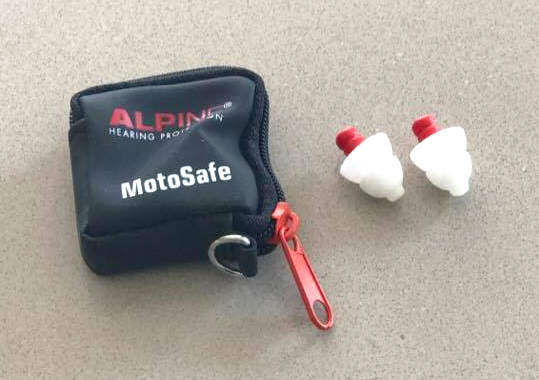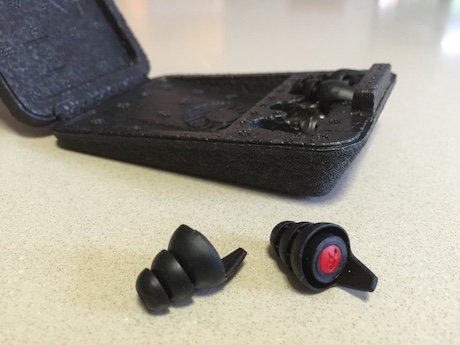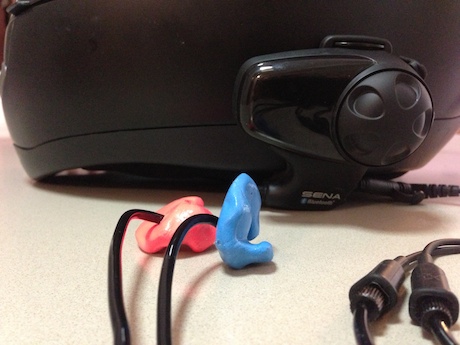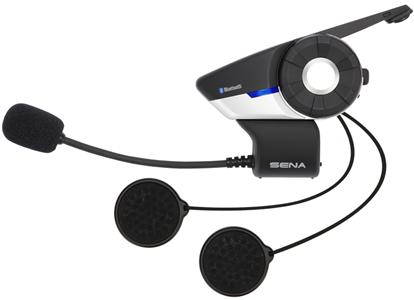Riding long distances for days on end is something that most bikers think of at one time or another. Being free to roam the roads along a beautiful stretch of country on the way to somewhere is the big draw of a motorcycle road trip. It certainly is for the author of this article, American blogger Lucas Knight (see details at the end of this article).
It would seem like a natural progression from regular commuting or sports biking around town. But these journeys have added challenges that regular bikers may not be aware of. For long-distance motorcycle travellers, knowing what to expect can make the difference between a memorable journey and a tiresome haul.
There are some things that you might need to know and prepare for in advance of such an adventure. I’ve listed a number that most might overlook. If you’re planning a big trip, hopefully you’ll learn something useful to keep you whole and happy on long roads.
1 Begin and end early
Try to be ready and rolling by 8am, if possible. It’s always great to watch things wake up around you in the morning. And with miles to go, the earlier you can get going, the earlier you can stop for the night. However, because of wildlife, it’s best not to hit the road too early and to be off the main roads by dusk. The dimming light can make it more difficult to spot and be spotted in turn, and you’re better off avoiding street hazards and becoming one yourself.
2 Dress the type
For long rides, aside from a full-face helmet you will want bike clothing with armor inserts and brightly visible styling that offers both the protection and looks to go the distance with you. A close fit is best, as baggy clothes can only discomfort you as you ride the breeze.
It may feel clumsy at first wearing full motorcycle safety gear, but on the highways you’ll feel safer and more confident with fun in mind.
3 Prepare for changing weather
Always be ready for some discomfort in the open due to unexpected conditions. There’s a saying that on any really long trip, you will wind up cold, hot, and wet at some point. Especially if you’re going cross-country during changing seasons.
One moment you could be running hot, the next you could be drenched in a sudden downpour that leaves you freezing in the onrush until the wind dries you out. Vented and waterproof jackets, pants, and gloves will leave you cooler in the heat, warmer in the cold, and dryer in the wet. Ankle-length motorcycle boots will keep your feet cool and protected as well.
4 Long and noisy roads
If you’re not used to riding for more than a few hours, I wouldn’t advise jumping straight into your first grand trip. Get some extended practice to acclimate yourself to the rigors of lengthy rides. The wind rushing into you is an energizing experience, but many hours of that at 70+mph (112km/h) is going to be fatiguing. If you don’t have one, get a decent windshield installed to save your sanity.
It’s constantly loud on most highways and traffic-heavy streets. It can be so honking noisy that putting on earplugs will likely save your hearing for rest of your life. Pocket a few pairs, you won’t regret it.
Our MotorbikeWriter online shop now sells Alpine MotoSafe earplugs.
5 Adjust stance constantly
With stock bikes, your seat’s form and riding stance will be critical. A seat that remains comfortable will be firm enough that you won’t sink into it. After hours on the saddle, you’ll inevitably itch to move back and forth on the cushion from time to time, and a firm and relatively flat seat enables that. You might want to try an aftermarket seat with a backrest even.
Highway-ready pegs may also help you secure your footing . In any proper setup, you should be able to bend your knees at various angles every time you shift position.
6 Maps and wireless ease trips
Far too many riders screw around with mounted GPS or smartphones instead of paying attention to what’s up ahead. I think you’d be better off consulting Google or Apple Maps and Waze when you’re off your bike. Paper-based maps are actually nice as you can open them up to visualise bigger areas than smaller screens can display.
Bluetooth-equipped helmets can play your music library from your phone and let you hear mapping instructions, receive voice calls, and even enable you to talk with similarly-equipped companions. If you’re putting your smartphone to the task, touchscreen-friendly gloves will let you manipulate its screen without need to take them off.
If you have cruise control you’ll be able to maintain a constant pace for extended periods of time, for a safer and less exhausting ride. The feature is especially useful in fast-moving traffic, as holding your speed should dissuade drivers from constantly (and dangerously) passing you if you’re unknowingly slowing every so often.
7 When you can ride more, rest some
Stop for breaks every time you fill your tank, with frequent shorter stops in between. When you discover a nice spot or roadside place, pause and enjoy the life. A good rule for drinking or eating is do so before you actually feel thirsty or hungry. You’ll also get to stretch your limbs and relax your aching back as you snack, which you’ll often want to do anyway.
After hours on the go, only rest will let you regain the mental concentration needed to stay alert and focused while riding. From my experience, even if you don’t actually have to fully rest early on, you will feel much better at the end if you do, so do yourself the favor.
8 Inspect often
It’s challenging enough to attend to traffic and hazards, what more when it’s your own machine that’s showing signs of mechanical trouble. Check the tires for raised cords, punctures, and nails whenever you can. Inspect the sprocket and links and look for oil and antifreeze leaking underneath or on casings. Check in the morning before you go off, check again whenever you load gas or take an extended break, and check as you park at day’s end.
Pack a lightweight bike cover, it will not only shield your bike from the elements overnight, it may also deter thieves. You’d better sign up for something like American Motorcyclist Association’s Roadside Assistance if your journey will be epic.
9 Drink and snack smart
Bring water and snack items in a side pack or zip bag to consume on the road. The usual essentials like lightweight multi-tools, spares, and first-aid kit can go into DIY saddlebags formed out of trash compactor bags, which are waterproof and stronger than regular trash bags.
Few bikers consume enough water during the day. You cannot afford dehydration problems, for you will tire out faster and as it gets worse, you can suffer from nausea, muscle pain, and headaches in warm weather. Don’t wait until you are thirsty to have a drink. In really hot and arid conditions you will need to drink a liter of water every hour, so make sure to bring enough. Some serious adventurers sip from backpack hydration systems as they ride, and you might like the convenience.
10 Night chores
A lot of messy grime and debris are found on the highways and byways of long trips. Once you’ve reached your night stop after a day on the move, you’ll find much of that stuff on your sweaty clothes, even on those parts that you might think are well-covered by your jacket and helmet.
So don’t assume that after having ridden several hours, you can just get off and readily enter some nice restaurant whose patrons are going to be spiffier and nicer-smelling than you. If you’re rushing, you could locate an eatery or cafe that’s popular among local bikers. Or else ensure that you’ll have enough time to freshen up in your room before going out for a nice early dinner.
Tour on
In spite of this all, would you go on a road trip again? Sure you would, but with more planning and preparation from what you will have learned, right?
There’s hardly a better means to see and enjoy the country from ground up than your own bike. You might even consider upgrading to a “touring” model. These are heavy and powerful bikes built to go fast and far with a passenger and heavy baggage while providing a comfortable ride all the way.
Once you’re used to the life, you can roll on to visit more places. Just keep these guidelines in mind for your next trek as a veteran traveller.
About the author
Over the past 10 years, American Lucas Knight has built up an incredible passion for travelling by motorbike and is the author of motorcycle blog MotorManner.com.








